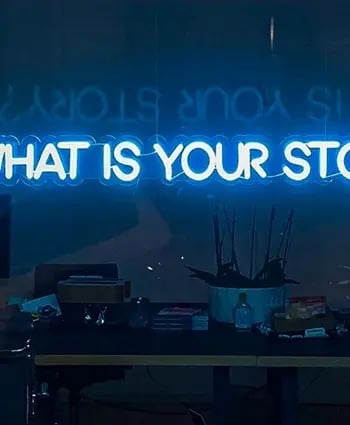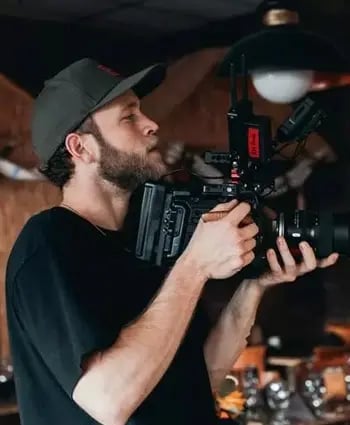7 Surefire Steps to Maximise the Reach
To get the largest reach (and ROI) from your video content you need a solid marketing strategy. Here are our 7 key steps to maximise reach.
You've created some outstanding, effective corporate video content that's tailored to your target audience and your business goals. Awesome! What's next?
 Well, next comes the distribution plan. But you can't just share your video on your social media channels and hope for the best.
Well, next comes the distribution plan. But you can't just share your video on your social media channels and hope for the best.
To successfully market your video content and maximise its reach you'll need to put some thought into how you can get the most value from your video. Don't just hope that your video content will reach the right people. Here are 7 steps to follow to make sure the reach of your video is as large and targeted as possible.
1. Build a Video Marketing Strategy
First things first, you need a proper plan.
Before even making your video content, you should have decided what you want to achieve with it, who your target audience is, and how insights into that audience inform your creative approach to the video. In essence, your video content will be tailored to your audience.
When moving onto your video marketing strategy, you need to consider how your target audience views video and where they spend their time online. Based on this information, you should build a plan to place your video where it will effectively reach your audience, on appropriate channels and through appropriate influencers or communities.
Don't forget your ultimate objective for your video content either. Plan to include a Call to Action (CTA) in your video that will encourage viewers to take additional action that helps to achieve your goals (whether that's visiting your site, starting a free trial or watching another piece of your video content).
And don't worry if you're already finished producing your video. Generally CTAs can be added fairly easily to the end of your video content in the form of end cards.
2. Define How to Measure Success
Next, make sure you've decided what success looks like for your video project. This all comes back to your objectives for your video content and what you want to achieve.
Don't skip this step just because it might seem obvious or unnecessary, unless you pin down your KPIs now, you won't know exactly what you need to measure to find out if your video has been successful. You run the risk of losing that data and being unable to assess if your video was actually a worthwhile effort or not.
It's best to set out, in specific figures if possible, what would make your video a success. This could be 5,000 unique visitors in traffic to your website from the video. It could be 100 new leads generated by the video. Or it could be an engagement rate of 75%. Whatever that goal is, note it down (and set a time frame if you can).
Then it's a case of making sure you have the right systems and processes in place to track the relevant metrics. For example, if you're measuring traffic from your video to your site, you'll need a specific tracking URL in the CTA of your video.
Best of all, by knowing exactly what to measure to assess the success of your video, you can see if you're on track to achieving your goals. If not, you'll be able to alter your strategy accordingly.
3. Host Your Video Content
Now that your video is made, it's time to host it. You need to choose the right place for your content to live before it can be shared elsewhere online (and this isn't always YouTube!).
It's important to remember that a hosting platform simply does that: it hosts your video, or makes it accessible via the internet. From there it's up to you to spread that video content where your target audience will find it. You can also host your video yourself, although this is complex and time-consuming, we don't recommend it unless you really have the expertise and technology in-house.
What we do suggest is finding a good third-party hosting service for your video, such as Wistia, Vidyard or Brightcove. Although an alternative like YouTube might seem cheaper and easier than these paid alternatives, if you're serious about getting the best results from your video content we can't recommend them highly enough. With a hosting platform like Wistia you have greater control over your video, better analytics and more options for customisation (like adding your own CTAs).
It's important to note that YouTube isn't just a hosting platform; it's also a social media channel, which means any videos you put on YouTube are immediately findable whether you choose to share them or not. Basically, if you host your video solely on YouTube then you lose a great amount of control over your content: what ads are placed over it, what videos are recommended next.
That's not to say you can't place your video, or some form of it, on YouTube as well. It's just that we don't recommend relying on YouTube as the single host for your video content.
4. Start Social Media Seeding
Now it's time to really begin distributing your video content. On your social media sites you're already offering valuable content to your audience, so if your video content fits the bill then add it into the mix (this is the time to post to YouTube).
But make sure you post your content according to your video marketing strategy. Who are your audience, where do they watch video, and what benefit does your video offer to them? Place your video content on the right social channels for your target audience and the content of the video itself. By seeding your video socially like this, you're ensuring further long-term reach.
Also consider how you present your video. Be clear in your message, tell your audience what they'll get from the video content, and make it sound enticing. Use keywords and tags so your video is easy to find. Where relevant use images or thumbnails to catch your audience's attention. If your strategy includes gaining traction with hashtags or mentions of other users, put them in. Post your updates at the most opportune time of day or week to reach your audience, and stagger multiple posts about your video content across a period of time (like a month) to get the greatest reach.
And don't forget those all-important CTAs, which can also be woven into the text of your social media posts or uploads.
5. Share Your Video on Relevant Sites
You've shared your video on the right social channels, but you're not done yet! There are plenty of other places on the internet where your target audience might look for, or be reached by, video content.
Where you distribute your video will depend largely on the personas in your target audience. There are a vast number of content aggregating and/or content sharing sites on the web, and each one of them has its own rules, customs and communities. This list is by no means exhaustive, but here's a good place to start your research:
If you have enough budget and have planned for it in your video marketing strategy, now is also the time to engage in paid promotion of your video content.
6. Begin Conversations with Influencers
Don't underestimate the power of endorsement by influencers your target audience respect and trust. It's worth your while to spend some time identifying who your audience listens to online, whether that's on Twitter or LinkedIn groups or elsewhere.
But you can't just dive headfirst into promoting your video content to these influencers; it'll come off as insincere. Take your time and build up a real relationship first. To begin with you'll want to engage with communities where your target audience and their influencers spend time, listening to what people say, participating in discussions and trying to add worthwhile contributions. Once you've identified key influencers (those with the most respect and largest reach), start talking to them in particular.
Soon you'll have developed another forum through which to extend the reach of your video content. When your relationships are strong enough, share your video in a natural way, request feedback from an influencer on Twitter or ask a relevant LinkedIn group what they think.
Here's where your work on building relationships really pays off. If the right influencers respond positively to your video or even share it with their own followers, you'll gain exposure to a large collection of your target audience. Just don't give up on these communities once you're done. Stay regularly engaged, and the whole process will be much easier when you (inevitably) share more content in the future.
7. Repurpose and Reuse
We've arrived at the final step! Even though your video content might have reached a large amount of your target audience so far, there's always more you can do to boost your reach.
Think about ways you can reuse or repurpose your video to really get the most reach (and ROI) from a single piece of content. Say you're a company that builds bicycles. You've created a promotional video of real clients using your bikes and giving short testimonials for use at the top of the funnel, across all your social media channels, on YouTube and as a promoted ad.
Once your original campaign is over, you decide to repurpose the video content into short preview videos for each type of bike you offer, for use at the bottom of the funnel on your product pages. You then write blog posts featuring the shorter videos to explain the capabilities of the bikes and how to use them.
This is a great example of how one piece of video content can be reused in various ways across your whole marketing strategy. Not only are you saving time and money, but you're getting the greatest reach from your video content by identifying new ways to repurpose, reshare and repromote it.
Maximising the reach of your video content takes a well-planned marketing strategy that is effectively rolled out and flexibly adapted if your goals aren't being met. Be sure to incorporate social seeding, syndication across relevant sites, influencer endorsement and repurposing into your strategy to get the biggest reach and ROI from your video content.
-Oct-17-2022-09-40-27-03-AM.png?width=156&name=Video%20Fundamental%20Guide%20Thumbnail%20(1)-Oct-17-2022-09-40-27-03-AM.png) 5 Fundamentals of Video Content Planning
5 Fundamentals of Video Content Planning
Learn the key steps to planning engaging & effective video content.
Packed full of our expert advice on how to create a video strategy, set SMART objectives, and generate the best possible video ROI.
Written by Jonathan English CEO for Venture Videos — a full-service video production agency that specialises in producing creative videos & campaigns that get real results.




